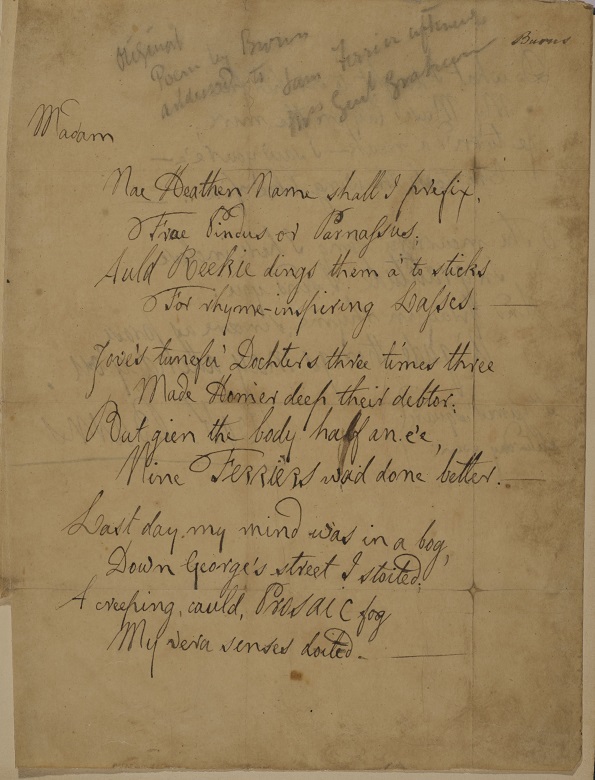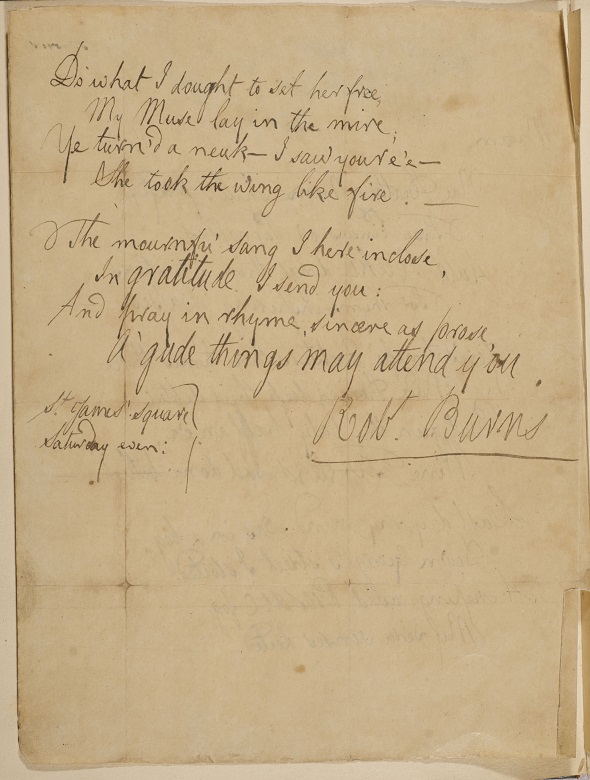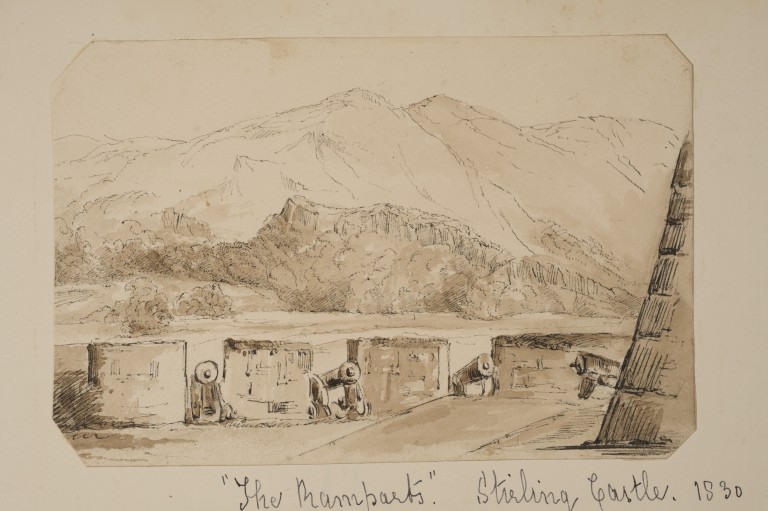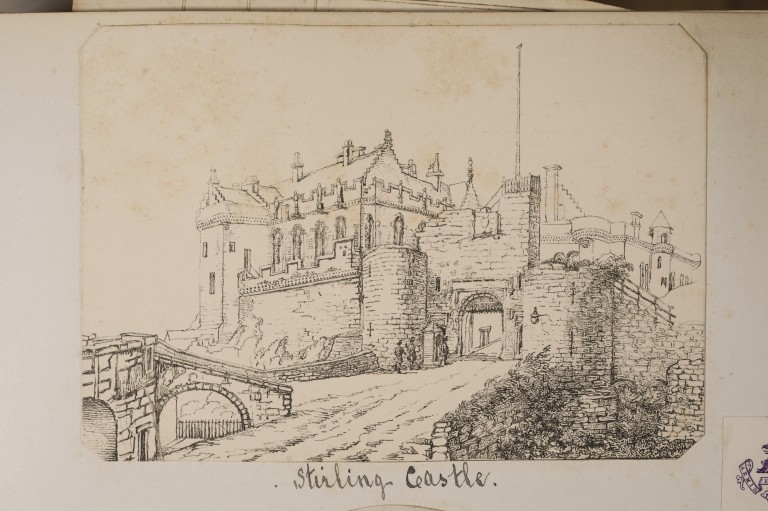The Tower of London has the Crown Jewels, Edinburgh Castle has The Honours of Scotland but at Stirling Castle our priceless treasures are the 16th century works of art carved in oak known as The Stirling Heads.
That these artefacts have survived the ravages of time since the mid-1500s is a testament to the skill of the craftsmen who made them. However, that they exist today in such a large collection is due to the interest of a genteel upper-class lady in the 19th century, Jane Ferrier.
Jane Ferrier, The Artist
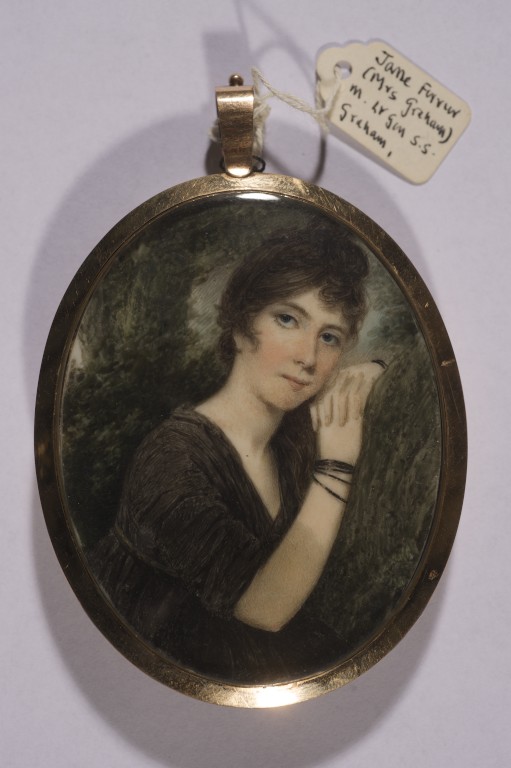
A miniature of Jane Ferrier, on the eve of her wedding to Lieutenant General Samuel Stevenson Graham.
Jane Ferrier was a member of a family of some renown in literary Edinburgh in the 1800s.
Her sister Susan, a writer, has been called the Scottish Jane Austen. They mixed in circles which included the likes of Sir Walter Scott, a colleague of her father’s at the Court of Session.
Robert Burns is said to have been inspired by the Ferrier sisters when he saw them in the street. He believed their beauty sparked his imagination and got him over an episode of writer’s block.
The War Hero – Lieutenant General Samuel Stevenson Graham
After an earlier tragic loss of her fiancé, Jane formed an attachment to Samuel Graham, a soldier. However, her father was not happy with the engagement. He insisted they should wait until Graham had made something of himself.
In the ten years that Jane had to wait, her soldier did indeed prove himself! He fought in America, France, and the Netherlands and once escaped being hung by George Washington.
In 1804, he was made Deputy Lieutenant at Stirling Castle and this was followed by the couple’s marriage. In the biography of General Graham, written by his son, he is described as an officer who thought highly of his men.
He refused to mete out beatings, as he believed this had a detrimental effect on the men’s morale. This philosophy caused him to the be criticised by other officers.
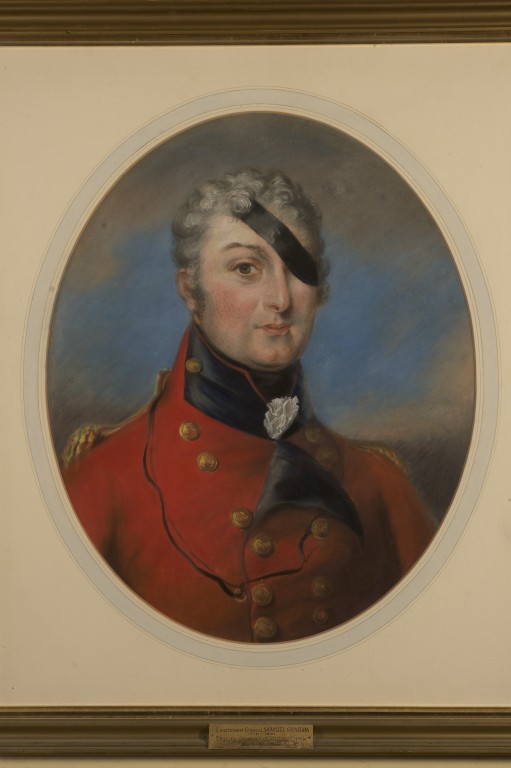
A portrait of Lieutenant General Samuel Stevenson Graham, deputy governor of Stirling Castle from 1800 – 1831
Stirling’s Striking Couple
Jane Ferrier and General Graham were married and took up residence at Stirling Castle. They must have made a striking couple – the war hero with his eye patch and the fashionable artist.
They seemed to have enjoyed their life in Stirling. General Graham took a great interest in improving the gardens. Some of Jane Ferrier’s sketches of Stirling still exist, such as the drawing below entitled ‘From the Ramparts’. It shows the Abbey Craig before the Wallace Monument was built.
While based in Stirling Castle, General Graham and his wife had a reputation for entertaining literary society. In his biography, his son describes how his father felt that the main use of Stirling Castle was now not solely as a fortress, but also as a stopping point for any adventures north into the romantic Highlands. The couple were happy to show off to those “who would understand and sympathise in those feelings which Stirling Castle calculated to awaken”.
This is a sentiment Sir Walter Scott would have agreed with. He had no qualms in writing a letter of introduction to his old friends, the Grahams, to ask them to show “all that is worth noticing in your castle” to his son on his first journey away from home.
The Stirling Heads
Jane Ferrier’s son states that the story of The Stirling Heads was known to the General and his wife when they took up residence at the castle. The carved wooden medallion heads that James V commissioned for his Palace would have been inspired by those he had seen during his travels in Europe. Highly decorative and brightly painted, they were a stunning sight.
A ‘gentleman traveller’ writing about his visit to Stirling Castle in 1723 said
there is nothing at Windsor or Hampton Court Palace to compare.”
However, it is said that one of the Heads fell from the ceiling and ‘badly injured’ a soldier in 1777. The rest of the Heads were then removed and thrown out as firewood.
Ebenezer Brown, Governor of Stirling Prison, came across a young girl with an arm full of wood and questioned her. Realising where the wood had come from, he rushed to the Castle and rescued the heads that were left. The Heads ended up scattered all over the country: in private homes, in Provost’s Chambers and some just down the road in the Old Town Jail.
Lacunar Strevelinense
Jane Ferrier made it her mission to travel, find and draw the remaining Heads.
Blackwoods, the famous Edinburgh publisher, printed a book of her illustrations in 1817.
Lacunar Strevelinense was published anonymously. Each drawing was accompanied with a description attributed to each Head.
There is a list in an appendix that gives the location of some of the heads. Some were in the possession of Henry Cockburn, the well-known writer and advocate. This book sparked a new-found interest in the Stirling Heads. By 1928, the Stirling Institute had twenty-eight of them in the museum.
The Restoration
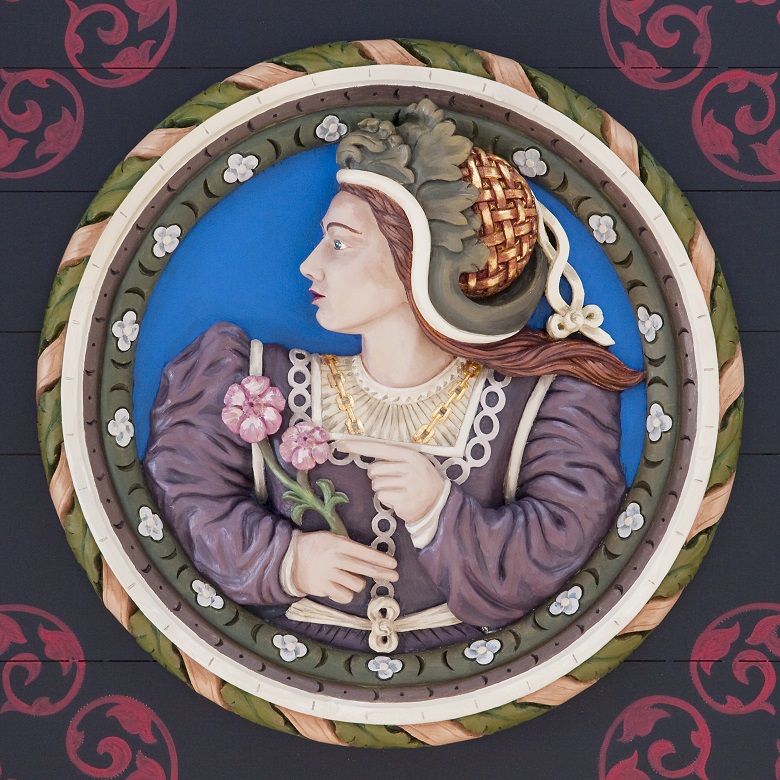
When the restoration of James V’s Palace was being planned in the early 2000s, it was agreed that the precious Heads could not be placed on the ceiling of the King’s Inner Hall again.
John Donaldson was therefore commissioned to create replicas based on the surviving Heads. Jane Ferrier’s illustrations were used as an invaluable reference for the Heads that were destroyed during a fire at Dunstaffnage Castle in the 1940s.
That the Heads are reunited again in this stunning example of original Scottish Renaissance artwork is due in no small part to Jane Ferrier’s interest in them and the publication of her book.
You can see the replicas in the Palace at Stirling Castle and appreciate how they would have looked when newly installed in the 1540s.
The original carvings are on display, along with an original copy of Jane’s book, in the Stirling Heads Gallery.


